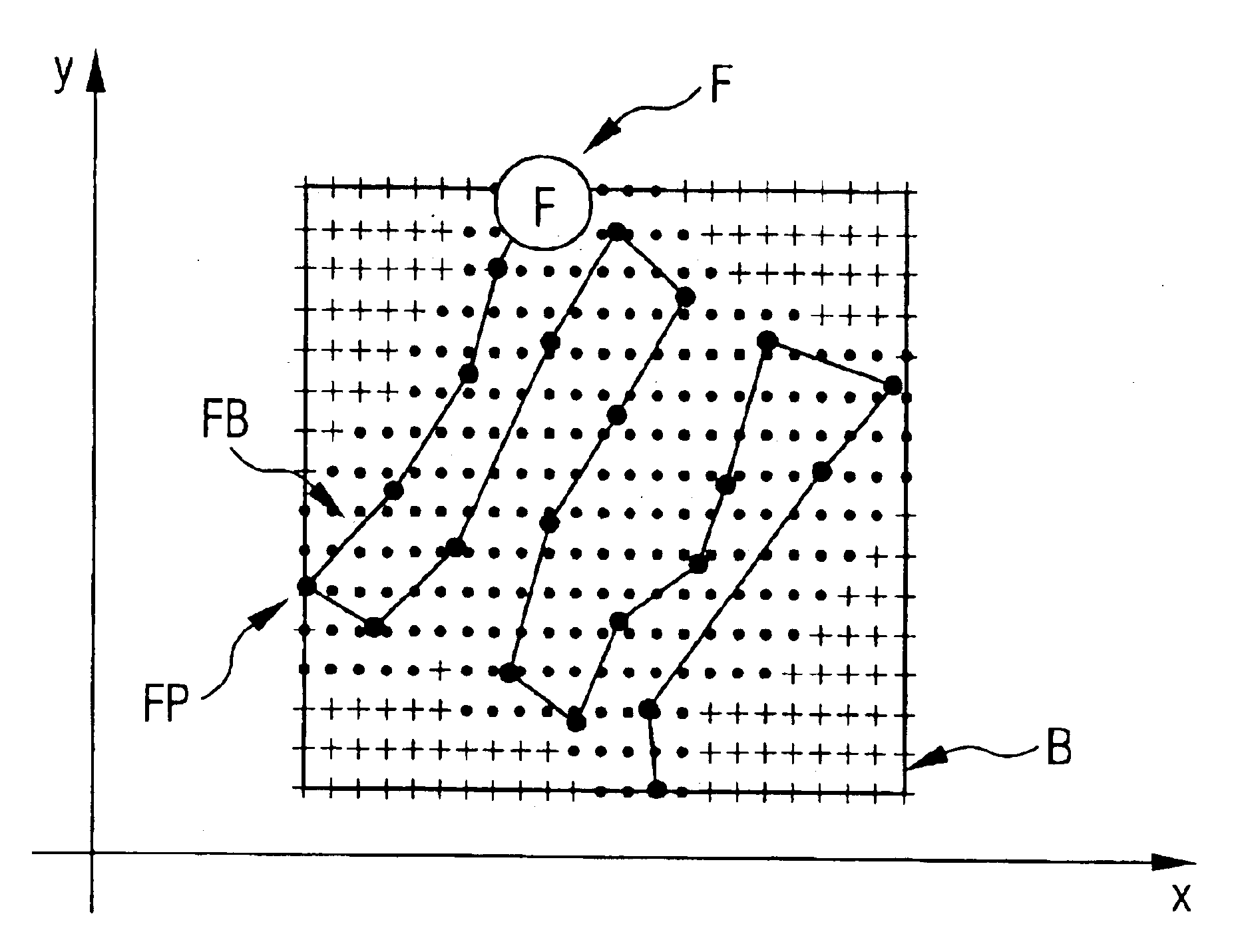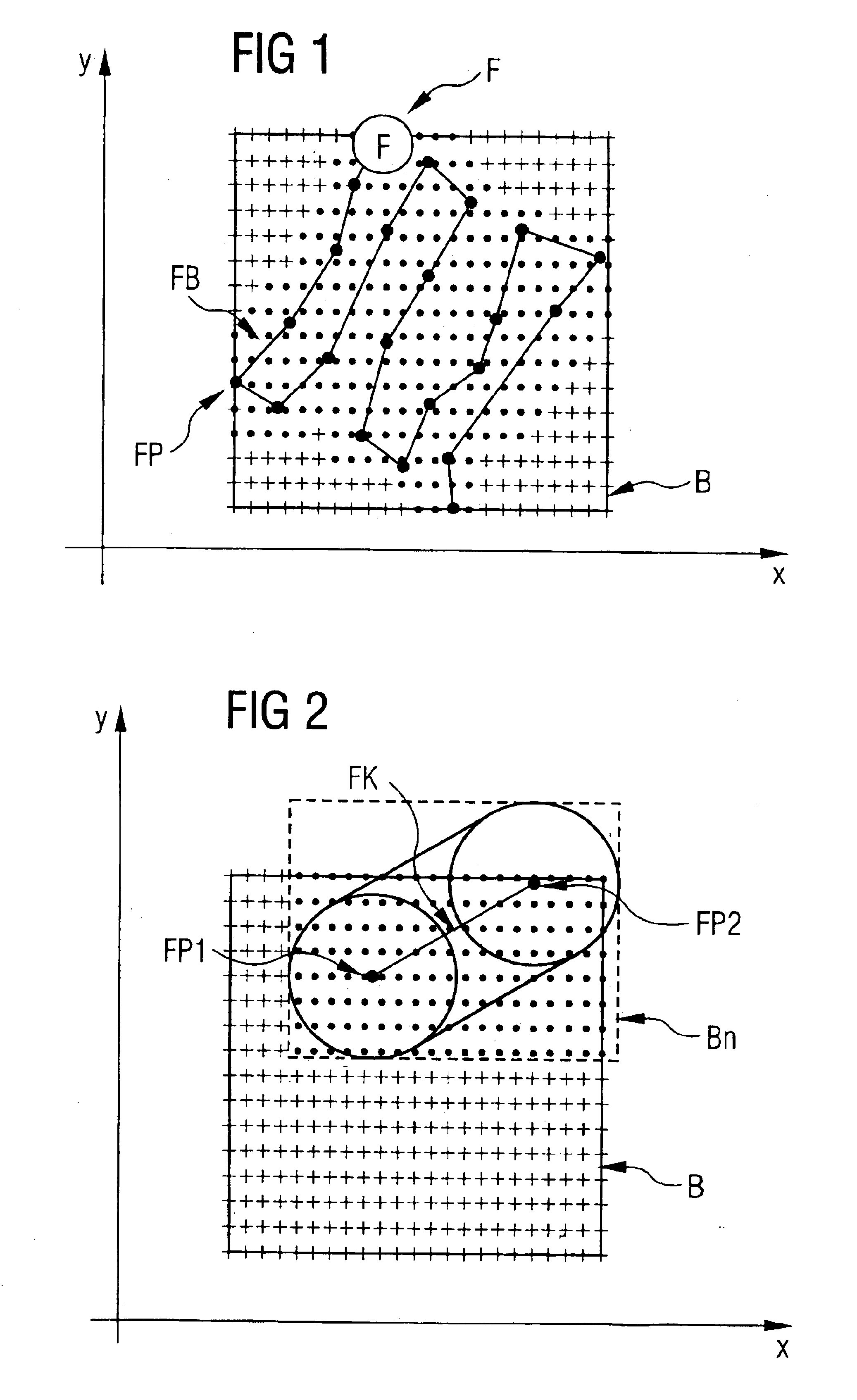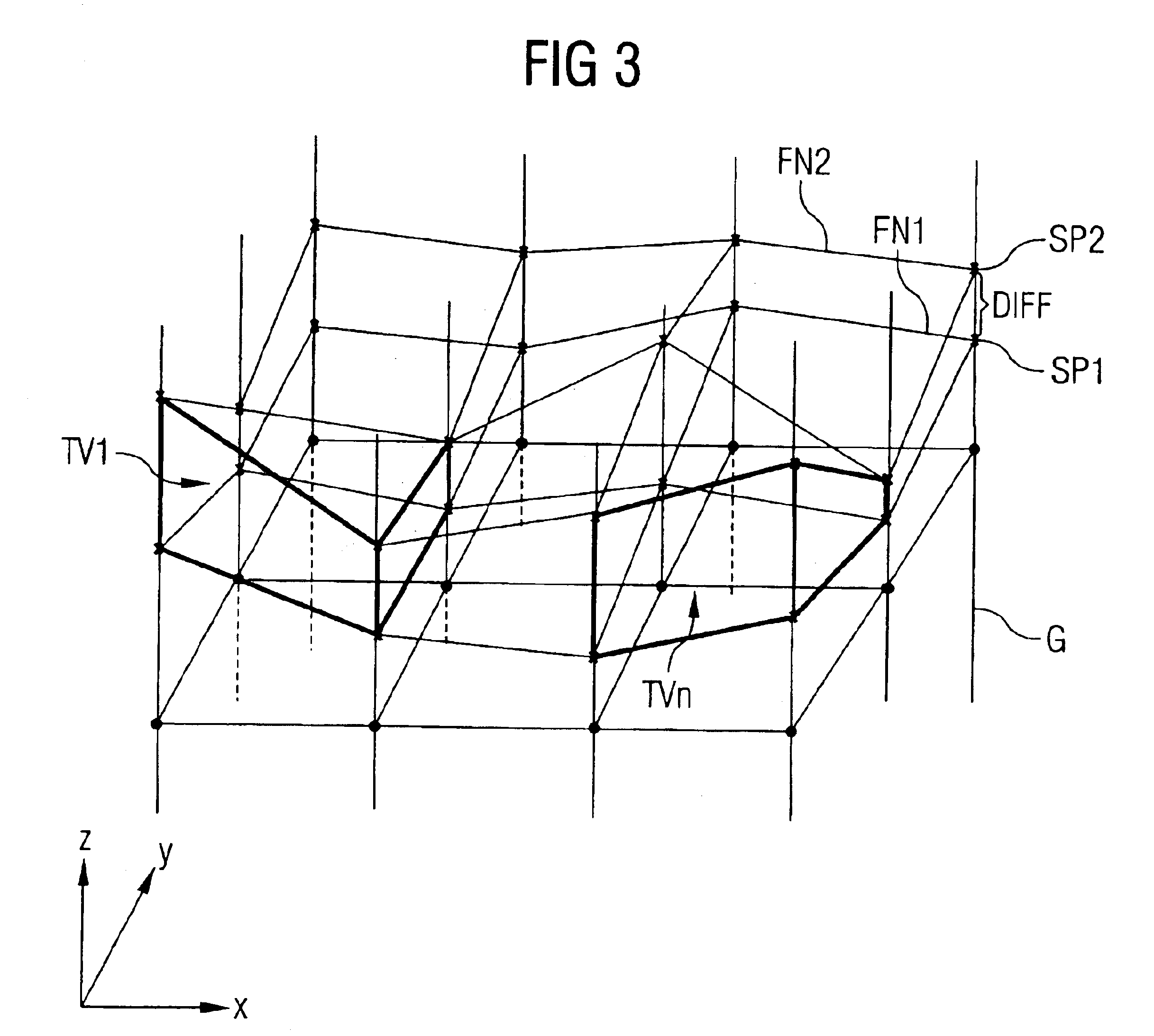Differential visualization of countoured surfaces
- Summary
- Abstract
- Description
- Claims
- Application Information
AI Technical Summary
Benefits of technology
Problems solved by technology
Method used
Image
Examples
Embodiment Construction
[0028]Throughout all the Figures, identical or corresponding elements are generally indicated by same reference numerals.
[0029]The invention is directed to a method for determining a grid surface for a workpiece processed with a virtual milling process with three axes, and to a differential visualization on the basis of two such grid surfaces.
[0030]The grid surface can be determined, for example, based on uniformly spaced straight lines that extend in the x-and y-direction and are parallel to the vertical z-axis. Preferably, the allowed straight lines must have point-shaped orthogonal projections in the xy-plane that are located inside a rectangle having mutually parallel axes (the definition of the rectangle will be discussed in more detail below). The family of straight lines models a blank workpiece which is represented by discrete data points in the x-and y-direction and extends to infinity along the positive and negative z-direction.
[0031]FIG. 1 shows schematically in a two-dim...
PUM
 Login to View More
Login to View More Abstract
Description
Claims
Application Information
 Login to View More
Login to View More - R&D
- Intellectual Property
- Life Sciences
- Materials
- Tech Scout
- Unparalleled Data Quality
- Higher Quality Content
- 60% Fewer Hallucinations
Browse by: Latest US Patents, China's latest patents, Technical Efficacy Thesaurus, Application Domain, Technology Topic, Popular Technical Reports.
© 2025 PatSnap. All rights reserved.Legal|Privacy policy|Modern Slavery Act Transparency Statement|Sitemap|About US| Contact US: help@patsnap.com



